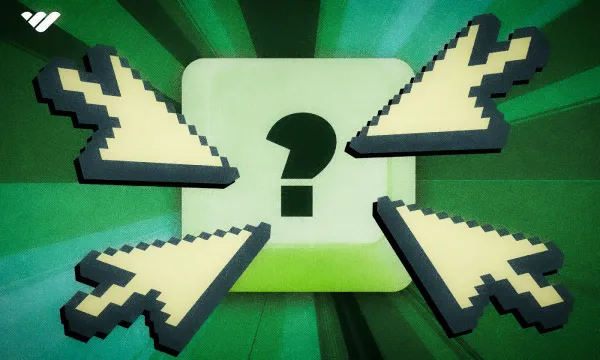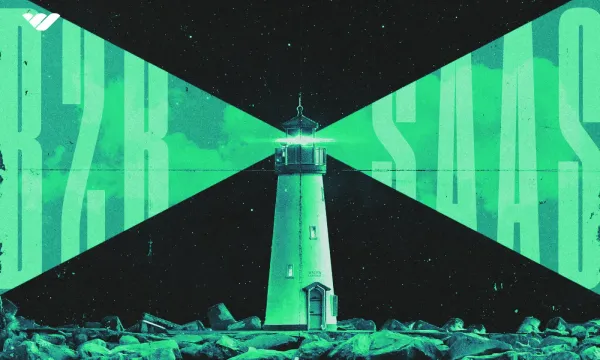Software as a Service, or SaaS, is everywhere. Your last binge-watching session on Netflix? That was SaaS. That chat you had with a business partner Slack? Yup, that's SaaS, too. What's more, you're probably bombarded with emails or prompts to sign up for some form of SaaS on a weekly basis.
Say you have a SaaS of your own, though, and you're eager to get it out in the world and get paid for the hard work that you've put into it. That's fantastic! But where do you sell it?
The answer is simple. Whether you're just thinking of creating software and selling it or you already have a product that's waiting to be sold, Whop is the best option for selling SaaS. With Whop, your SaaS will be easy to buy for your existing and future customers, but also visible to hundreds of thousands of new potential buyers.
There's a lot more to learn about the process of selling SaaS, and we're here to get you started. Below, we'll tell you everything you need to know about selling SaaS and help you get the money rolling in!
How is Selling SaaS Different from Selling Physical Products?
Selling physical products couldn't be more different from selling SaaS, and while there are benefits to both, the scales often tip in the direction of SaaS.
Many of us might remember the days when we bought CD-ROMs or even floppy disks with software or games. These days, more often than not, when you buy a game from a physical store, all you get is an empty box with a little note as to where you can download it from. Moreover, computers don't even have disc drives anymore.
As technology evolved, selling digital content in physical form slowly began to fade into the past. It's not just the physical nature of these products that changed into digital downloads; it's also the manner in which many of them are sold, meaning a departure from one-time payments and a stronger focus on subscriptions.
As a result, comparing SaaS to physical products is like comparing apples to oranges. Here's why.
- Delivery model. The obvious, and fundamental, difference between a physical product and SaaS is that physical products involve factors such as inventory, storage, shipping logistics, and often even brick-and-mortar stores. Meanwhile, SaaS isn't just strictly online—it's cloud-based, so for the customer, the only deliverable that you're responsible for is granting them access to your service.
- Sales cycle. Physical products, once bought, are owned forever (or until it breaks). This has its perks, but the SaaS model is infinitely more up-to-date, with constant updates and a focus on customer retention. SaaS sales strategies often include free trials, demos, and a strong emphasis on customer support that helps you minimize those pesky churn rates. Customers usually pay on a subscription basis, be it monthly or annually, although lifetime SaaS does exist.
- Marketing approach. Marketing SaaS products is different from marketing physical products. Selling SaaS means using digital marketing techniques, such as SEO and social media, and data analytics—but this depends on whether your SaaS is a B2B or a B2C product. Meanwhile, physical products often require an extra ad spend, be it on commercials or in-store promotions.
With that out of the way, let's dig into why SaaS products are worth selling.
Why Sell SaaS Products?
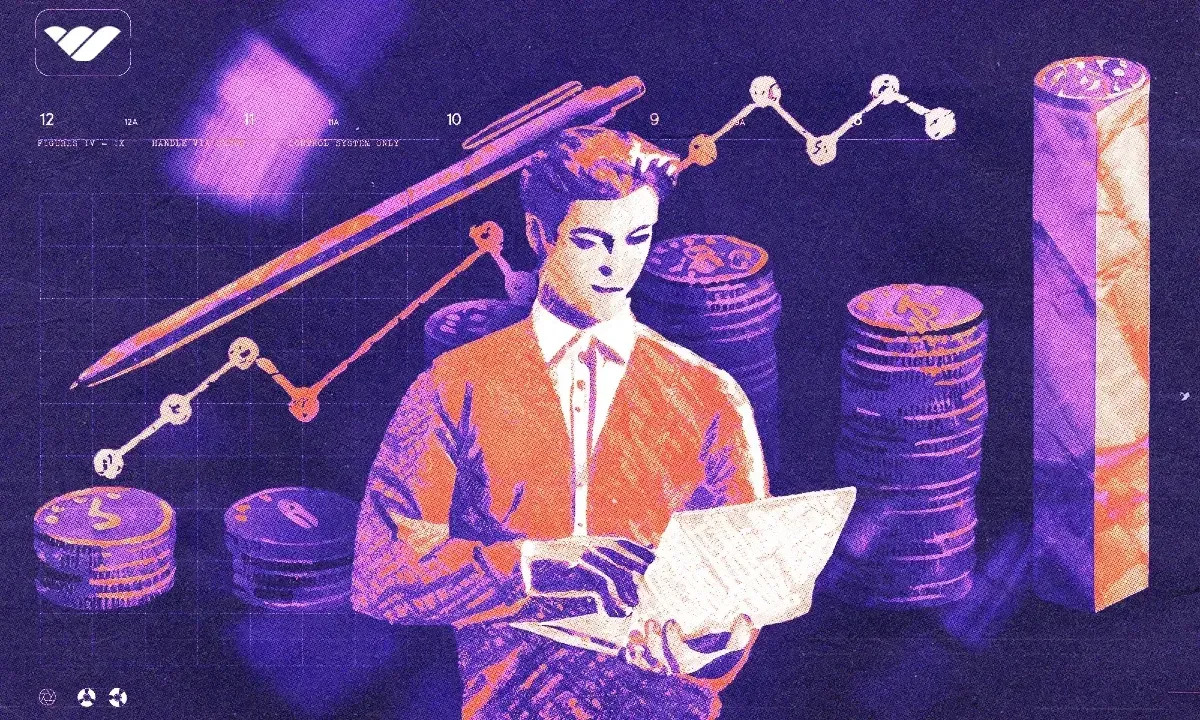
If you're here, that means you're already familiar with software as a service. Perhaps you've got an excellent, game-changing idea cooking in your head, or maybe you have a sale-ready product just waiting to be sold. One way or another, it's hard not to ponder: why even do it? Is it still possible to start from scratch and make a living—or a fortune—selling SaaS?
Of course it is. But we also get why you might be asking yourself those questions.
It's true that the market might feel saturated at times, and no wonder. The global SaaS market was valued at $273 billion in 2023, and it's expected to grow to a whopping $908 billion by 2030, achieving a compound annual growth rate (CAGR) of 18.7%. That is huge, and with the relentless focus on AI, it's possible that SaaS will knock that number right out of the park.
Those mouth-watering numbers are enticing all on their own, but there are a few more reasons to sell SaaS.
- Recurring revenue. Most SaaS products are sold in the form of subscriptions, which means that they can fall under the umbrella of passive income—but, more importantly, it means that once you get some subscribers, you can expect a certain amount of money every month.
- Reduced cost. Since your product is delivered and maintained online, you don't have to trouble yourself with expenses such as warehousing or physical manufacturing. However, you still need to pay for your digital home in the cloud and be able to provide a stable service to your customers, but that is often cheaper, especially on a smaller scale.
- Rapid deployment. Given the digital nature of SaaS, deploying bug fixes and updates can be done quickly and with limited manpower. You don't need to be the next iteration of Microsoft to sell SaaS; many SaaS business owners operate in small teams or even by themselves.
- Startup-friendly. SaaS has a remarkably low barrier to entry, which means that it's also one of the markets where startups are the most common. If you're not technically inclined, you will likely have to pay someone to help you create your SaaS, but even if you do end up teaming up with a techie, the industry is very welcoming to entrepreneurs, and startup costs are small.
- The sky is the limit. There's no ceiling in SaaS. It's not like physical products where most business owners eventually reach the market cap in their local area and need to tap out. In SaaS, you can have a global reach and evolve your product whenever you're ready, and this applies both to B2B and B2C sales.
Selling SaaS can be highly lucrative, and as long as you're creative, there are ways to make it happen. (Check out our best SaaS business ideas if you need some inspiration before we walk you through the sales process.)
The Traditional SaaS Sales Process
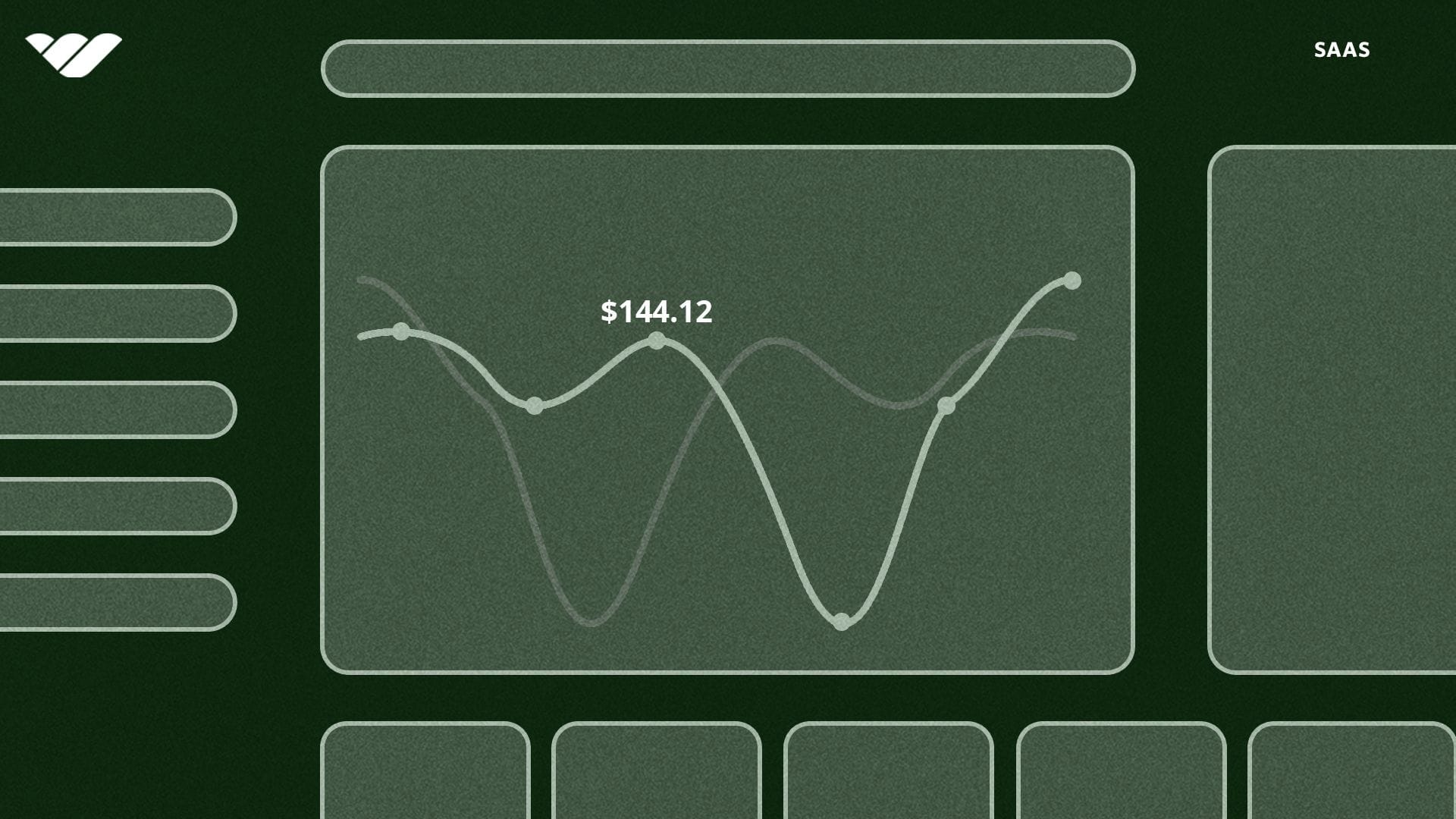
We've said it before, but it still bears repeating—selling SaaS is unlike any other type of product. As you're getting people to commit to a subscription, and those subscriptions are often pretty expensive, there's a much bigger focus on finding the right targets to pitch to, following up with a strong sales pitch, and then nurturing a lasting customer relationship.
The process for B2B sales is a lot more involved than for B2C, although for the latter, you still need to find the right ways to pitch and the optimal place to list your software.
What does this journey entail from start to finish? It all begins by generating leads. Keep in mind, though, that if you're selling to customers in a B2C business model, we recommend scrolling down to the next section where we'll tell you all about the best way to sell B2C SaaS.
Generate leads and explore organic marketing
The way to approach finding leads varies greatly depending on whether you're selling a B2B product or working directly with customers. For the latter, you'll have a bigger budget to work with, but also a much tougher time making a sale given the expense in comparison to the typical subscription sold to a consumer.
So, how do you sell your SaaS to people? Working with consumers means relying both on paid marketing and organic marketing.
For the former, you could be paying for ads or working with other brands or influencers to get your product seen by more pairs of eyes. Organic marketing, however, means creating helpful content that potential customers will run into. Weaving in elements of SEO and advertising through free channels such as social media are some of the ways to work on the organic growth of your SaaS.
You can generate leads on a large scale by doing any and all of the following:
- Maintaining a helpful blog
- Running social media profiles with relevant content
- Creating a YouTube channel
- Running a newsletter
- Hosting live webinars and live streams
If you're hoping to pitch to businesses, you should start by creating a list of companies that might be interested in your product. Research your industry and its various niches, and pay special attention to companies that could directly benefit from your product.
Even at this early stage, it's important to think of the how and the why, because if there's not much of a way to prove that your SaaS may bring tangible benefits to this particular company, your sales pitch may fall flat. Collect data and create a sample of companies that you'll be reaching out to.
It's not just the company, though—a personalized sales pitch is infinitely more effective. Look into the business in question and find out how to reach the decision-makers in relevant departments.
Pick the right leads
Not every lead is worth your while, which is why, both in B2B and in B2C SaaS, you'll want to qualify your leads and only move them up the sales funnel if they meet certain criteria.
- Rely on opt-in forms to gather initial interest from potential clients
- Use funnel filters to determine whether the lead is worth pursuing
- Ask questions about things like headcount, revenue, and future projections
- Determine the pain points faced by your leads and pinpoint how your SaaS might be able to address them
- Find the right contact within the company and double-check whether they have the authority to discuss a potential partnership with your business
- Evaluate needs to identify whether the company has an immediate need for your product or not
Consider using automated CRM and analytics systems to simplify this part of the process and ensure that you and your workforce only spend time working on genuine leads. Services such as Salesforce and HubSpot (which both happen to be SaaS!) can be used for lead qualification and lead scoring, while Google Analytics and Hotjar provide things such as user behavior tracking, goal conversions, heatmaps, and feedback polls.
We've got an exciting step coming up next: connecting with your leads.
Reach out to your leads
At this point, you've done so much research about your leads that you might feel like you know them personally. While that may not be true, you're about to get to know them a little bit better, and the approach once again varies depending on whether your SaaS is a B2C or a B2B product.
Selling directly to consumers? That limits your ability to contact them directly, but there are ways to do this:
- Email campaigns and newsletters
- Social media campaigns, giveaways, and competitions
- Special promotions and vouchers given out for signing up for your newsletter
- Retargeting ads
- Cart reminders
B2B sales, strangely enough, require a much more personal approach. Your best bet is to try to network with your leads through platforms such as LinkedIn. Instead of coming on strong, nurture those budding relationships by moving around the same circles, providing useful content and industry think pieces, and finally reaching out to put your product on their radar.
Don't settle just for those subtle attempts at befriending your leads, though. Cold and warm outreach is crucial too, including emails and phone calls. Since you've already narrowed the leads down, you may find your cold-calling strategy more successful.
Sell them on the idea
You've got one foot in the door. Now what? It's time to pitch your product.
Before you start writing out a lengthy pitch that describes exactly why your SaaS is great, hold on. Keep in mind that you only have a very limited amount of time before your prospect loses interest. Most people skim what they're reading, which is why your so-called elevator pitch needs to be concise, impactful, and to the point.
Even if your SaaS is highly advanced, the elevator pitch cannot be. You may be talking to non-technical stakeholders, and even if you're not, they too will play a part in the decision-making. As such, your pitch needs to be approachable and quick—around 30 seconds is considered to be the sweet spot.
The ideal pitch consists of the following:
- A strong hook
- An explainer about your product, what it can deliver, how you can provide it, and why it's useful for your lead
- Who is your target market, including any companies you've worked with
Don't forget to add a call to action (CTA) at the end that clearly states they should get back to you and how that can be done.
This is mostly used for B2B sales. In B2C SaaS, you'll still see pitches, hooks, and most of all, CTAs, but they're used within the context of a webpage or a video that the customer checks out first—perhaps without the intention to buy anything.
Find the answer to every "no" and "but"
Let's be real: SaaS products are often not cheap. Sure, there are lots of inexpensive SaaS options that cost a few dollars a month, but in B2B sales, we're talking about huge amounts of money. That makes the decision all the more difficult.
Once you're in touch with critical stakeholders, they might raise some objections during the sales process. At this point in the funnel, it's crucial that you know exactly how to address them, so we recommend preparing for this beforehand.
Brainstorm a bit and prepare a plan for every type of objection. Some of the most common "no's" and "buts" include:
- High costs
- Issues with integration
- Unclear benefits
- Doubts about company-wide changes
- Security
- The inability to try the product adequately beforehand
It's important not to flat-out disagree with the opinions of your potential customers. Instead of arguing against these objections, find ways to respond with a positive.
For instance, although high costs are a common roadblock, this is also less of a problem in B2B where the client likely has the budget but may not see your product as the answer to their problems. Focus on highlighting why the product is worth the money. Meanwhile, if there are seeds of doubt related to company-wide integration, discuss how you and your team are available throughout the process.
Seal the deal!
You did it! Once you've identified the right customers, got their attention, and then driven the point home with a fantastic demo, it's time to seal the deal. Sign the contract and get started.
From here on out, your approach will slowly morph into customer retention and upselling with that particular client.
An Easier Way to Sell SaaS Products
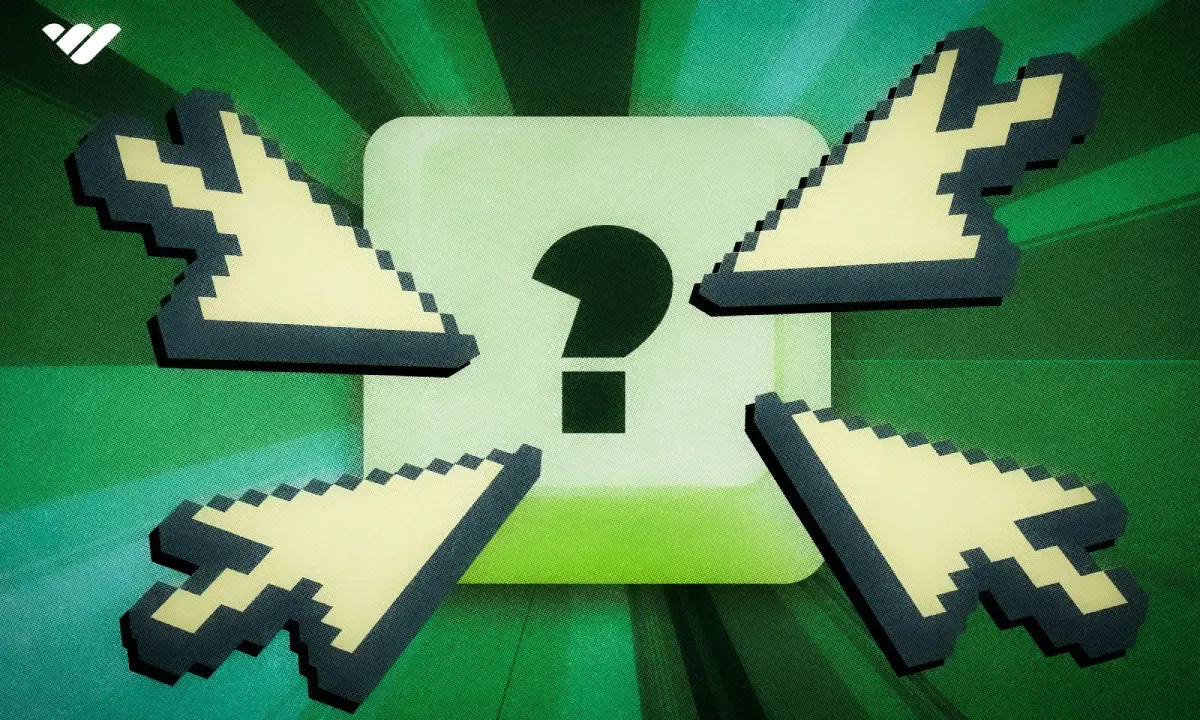
What you just read above was an accurate description of the standard SaaS sales process, but it mostly applies to the B2B model. Selling software to end-users is something else entirely. When you're trying to pitch your product to huge enterprises, you're dealing with a different set of challenges compared to when you're targeting individuals.
The good news is that, if your SaaS is of the B2C kind, you're in luck. Selling your product can be made significantly easier; a lot of the tiresome work can be automated, and the barrier to entry can be practically shattered if you try your luck with a SaaS marketplace instead of going all-in on organic marketing.
Assuming you're not secretly running a giant tech corporation, we'll go out on a limb and guess that you've only got a limited number of hours in a day. Creating useful content for all kinds of channels, maintaining an active website, optimizing it for SEO, and then working on your SaaS can add up to be a bit much. Fortunately, you can bypass the process of generating leads, qualifying them, and reaching out to them just by making yourself available in a place where people are already looking.
So, if you want to skip the traditional and less-than-optimal route for your B2C SaaS, what are your options?
List your SaaS on a marketplace
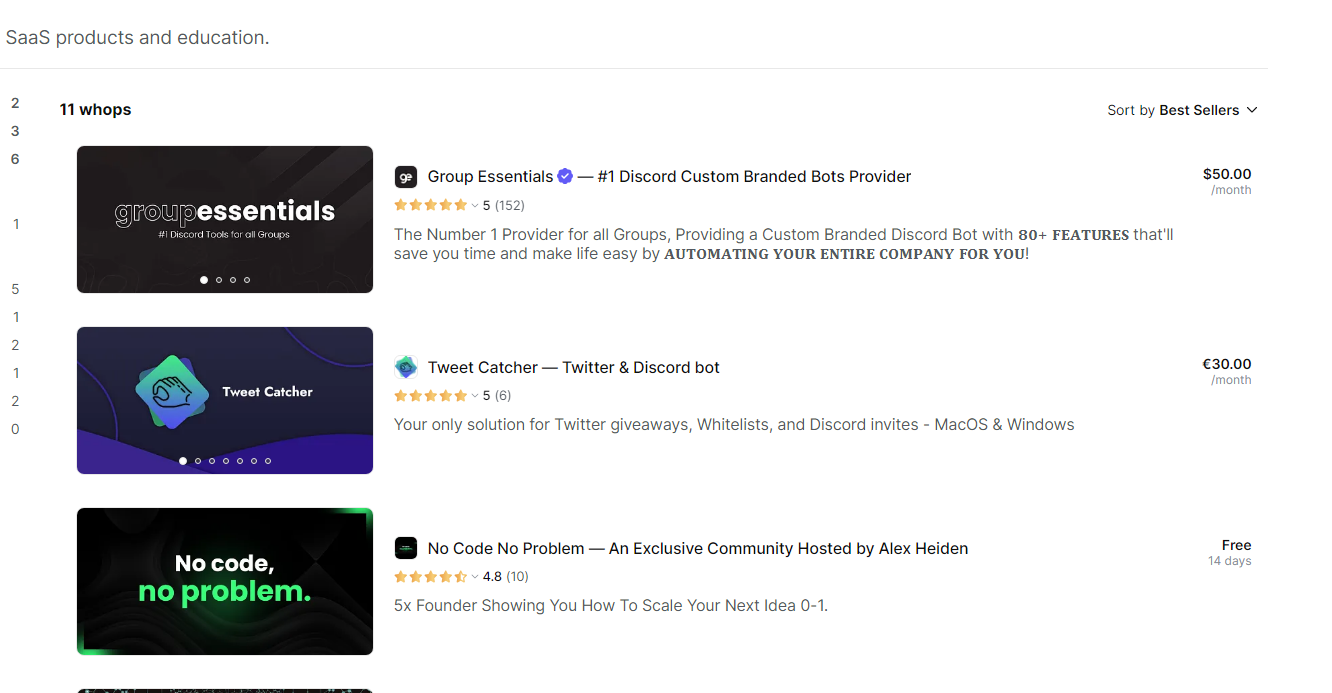
SaaS marketplaces, such as the Whop marketplace, are the easiest way to sell your product without a barrier to entry that's a mile high. Your software will appear on a marketplace that has an established user base and likely pulls in massive numbers every month. That kind of traffic cannot be beat—that's a huge pool of potential customers just waiting for your SaaS to woo them.
Listing your product on a marketplace doesn't mean that you have to stop there, either. You can still do some (or all) of the above to make your efforts even more successful. For instance, once you've got your listing up, you can tweak its description and product title in order to incorporate some strategic keywords and make it come up in search that much more often.
Offering free trials and regular updates also helps you ensure that your SaaS is always out there, right at the top.
Use social media
You can go a long way just by marketing your SaaS on social media, be it through making relevant YouTube videos or funny TikToks. While you won't be selling your product directly through it, it's an easy way to create helpful content and get some organic marketing flowing without spending your entire day on making it happen.
When you post on your socials, all you need to do is link your store on your marketplace of choice. If you play your cards right, people will want to explore your software outside of social media, and that's just a few clicks away from earning a new subscriber.
Hint: If you've got a bit of a marketing budget, that's even better—you can use the targeted advertising features of social media platforms, such as Facebook. This helps you pick a certain target demographic to advertise to and increases the chance that people might check out your marketplace.
Build a website
You're running your own SaaS, so you probably have a website—but it's totally okay if you don't, as you can easily sell digital products without one.
If you do own a piece of internet turf, however, you can integrate your SaaS store into your website. It can be something really simple, such as linking to your marketplace, or something more advanced; think along the lines of building a proper store right there on your website.
Here's another thing that Whop is good for. This is because you can integrate the Whop API directly into your website in a seamless way and allow it to handle all the transactions and automation while providing the customer with the shopping experience already provided by the rest of your website.
Leveraging the above methods can help you tap into a user base that's actively interested in software solutions like yours, and that's huge. It'll simplify the sales process and let you completely skip that time- and money-consuming step of generating and nurturing leads so that you can focus on growing your business.
Start Selling SaaS With Whop!
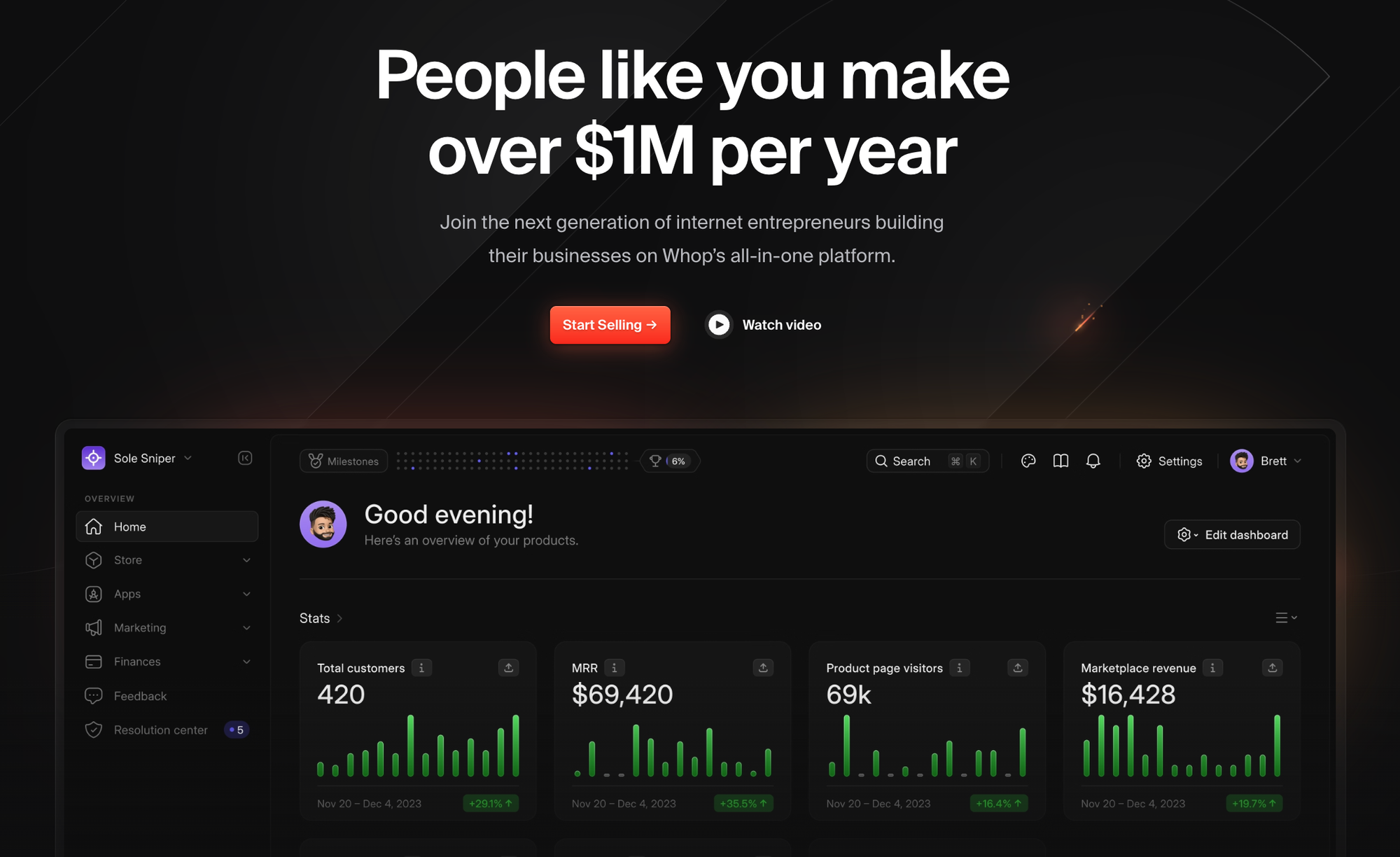
So you've got yourself an awesome SaaS that you can't wait to sell, but the prospect of setting it all up is daunting? Whop is the answer to your worries.
Whop is a platform for selling digital products and SaaS. Be it software, bots, templates, or automation tools, you can use Whop to start selling your SaaS in mere minutes.
With Whop, you can sell any and all of the following:
- Bots
- AI tools
- Automation tools
- Sports betting tools
- Access to private communities
- Software apps
- Mobile apps
- Newsletters
- CRM tools
- Web apps
- Trading view indicators
Thanks to Whop's established viewer base, if you choose to join the marketplace, your product will be visible to thousands of users who know what they're searching for. That means two things: more views and more sales, as those views will come from people who already want a similar product.
You can create your own Hub on the Whop and add your SaaS products to. Then, you can put your Whop Hub link on your website, social media, newsletter, blog, or other platform. Plus, you can apply to join the Whop marketplace and get seen organically by an audience that has spent over $375,000,000 on digital products.
From there, Whop takes care of everything, ranging from a secure payment system, to customer service, to full automation, such as granting access to your SaaS.
Save time and money so that you can focus on growing your SaaS. Start selling with Whop today.
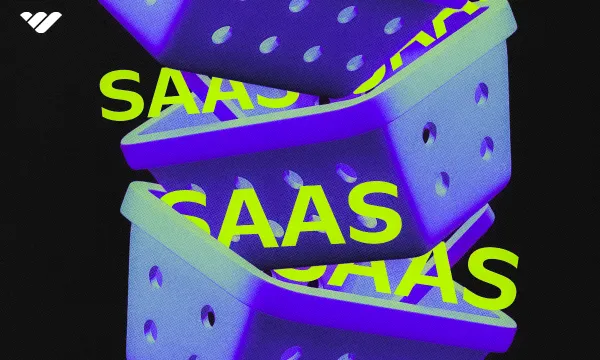
![The Best SaaS Subscription Management Software [2024]](/blog/content/images/size/w600/2023/11/SaaS-management.webp)

